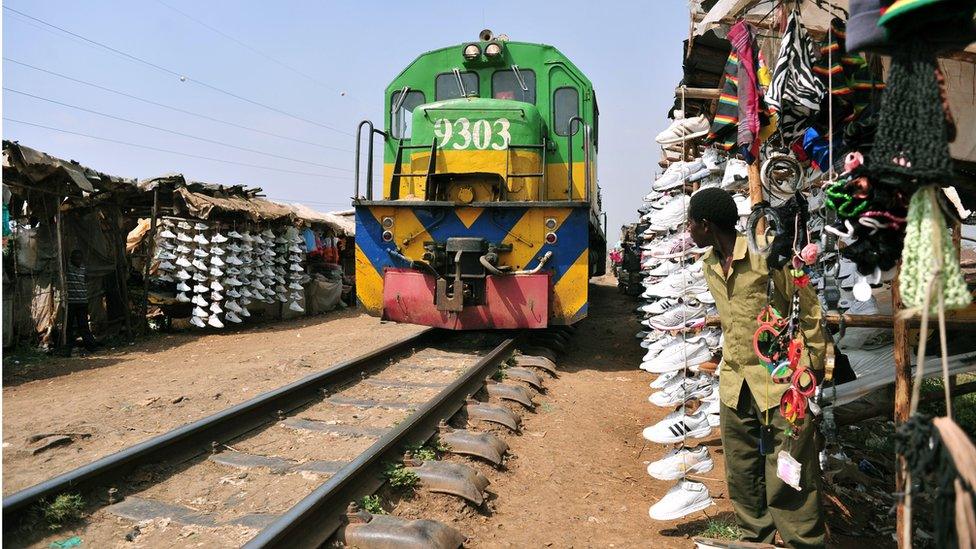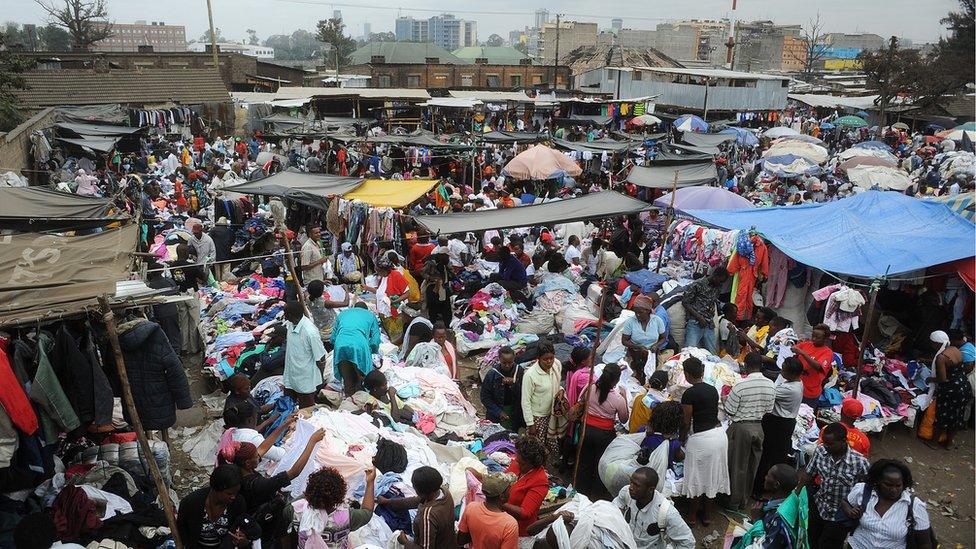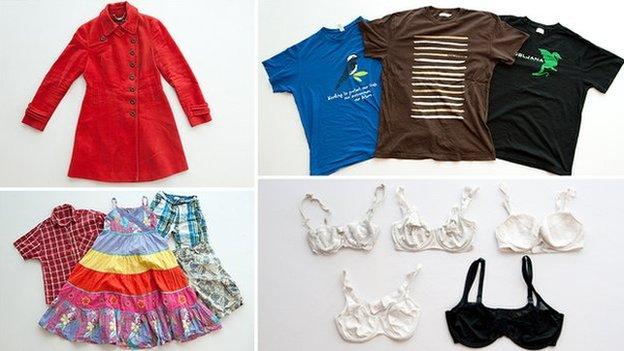Why East Africa wants to ban second-hand clothes
- Published

These second-hand shoes are all carefully cleaned before being resold in Nairobi
Many people in Africa buy second-hand clothes sent from Europe and the US.
But East African countries could ban imports of used clothes and second-hand cars in the next three years, putting an end to a lucrative trade in the region.
Who wants to ban second-hand clothes and cars?
Burundi, Kenya, Rwanda, Tanzania, and Uganda could all ban second-hand clothes and leather.
They make up the East Africa Community (EAC).
The EAC directed member countries to buy their textiles and shoes from within the region with a view to phasing out imports by 2019.
Before the meeting on Wednesday, the EAC also proposed a reduction in imports of used cars.
When will the ban happen?
The EAC suggested phasing out imports in the next three years.
However, the newspaper The East African reports, external that it depends on the five countries' heads of states all agreeing to a common industrialisation policy.
It adds that the proposal suggests a ban would only come in after an increase in local textile production.
Why do they want an import ban?
The idea is to give a boost to local manufacturing, and help the economy.
One argument is that the imported clothes are so cheap that the local textiles factories and self-employed tailors can't compete, so they either close down or don't do as well as they could.
A release from a previous EAC manufacturing and business summit says, external the leather and textile industries are "crucial for employment creation, poverty reduction and advancement in technological capability" in the region.
Are second-hand goods bad for your health?
Second-hand underwear has been called unhygienic.
The EAC urged governments to make sure that used-clothes imports complied with sanitary standards.
instead urging East African governments to make sure that used-clothes imports complied with sanitary standards.
Used knickers were banned in Ghana in 2011 and a Ugandan bill also proposed, external a ban in the country last year.
Second-hand cars have also been blamed for causing accidents.
BBC Swahili analyst Alex Mureithi explains that, to avoid paying taxes, people pay bribes at ports to import cars.
Those cars then do not go through any safety checks.
To give some idea of the extent of smuggled imports, it emerged in December that over 2,700 shipping containers had disappeared, external at Dar es Salaam port in Tanzania.
How common are second-hand clothes?

East Africa's biggest second-hand clothes market, Gikomba, in Nairobi sells used clothes coming from the US and South Korea
In Uganda, second-hand garments account for 81% of all clothing purchases, Andrew Brooks says in his book Clothing Poverty.
According to UN figures, external from 2013, South Korea and Canada combined exported $59m worth of used clothes to Tanzania while the UK alone exported $42m worth of used clothes to Kenya.

